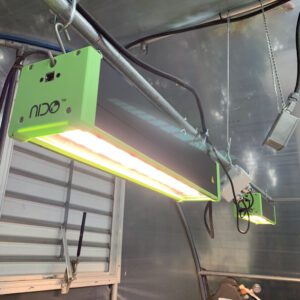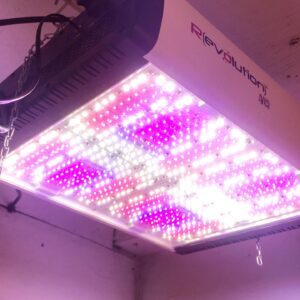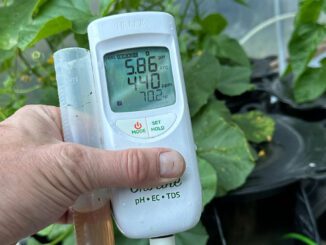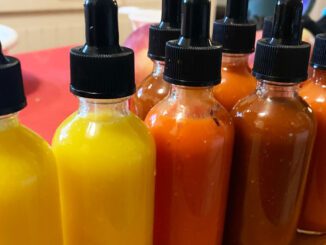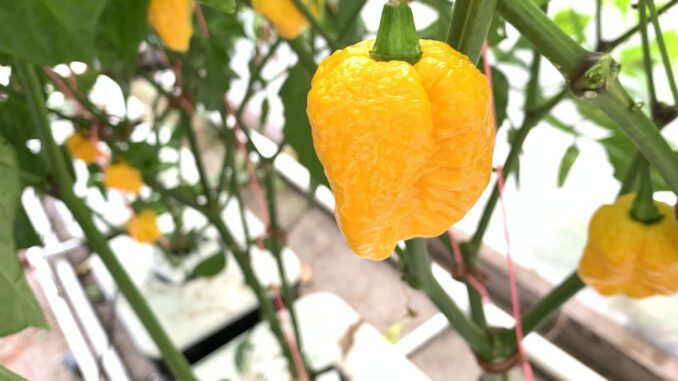
Growing Hydroponic Hot Peppers
Cultivating Chilies for Fun & Profit with Water Culture
Part One | Part TWO |
Growing hydroponic hot peppers is fun and can be very rewarding. Growing hot peppers (capsicum) like Bhut Jolokia aka Ghost Peppers, Carolina Reaper and Trinidadian Scorpion with water culture systems like DWC (deep water culture) or RWC (recirculating water culture) can improve growth rates, yield potential, fruit size, shelf life and possibly even heat units (Scoville Heat Units).
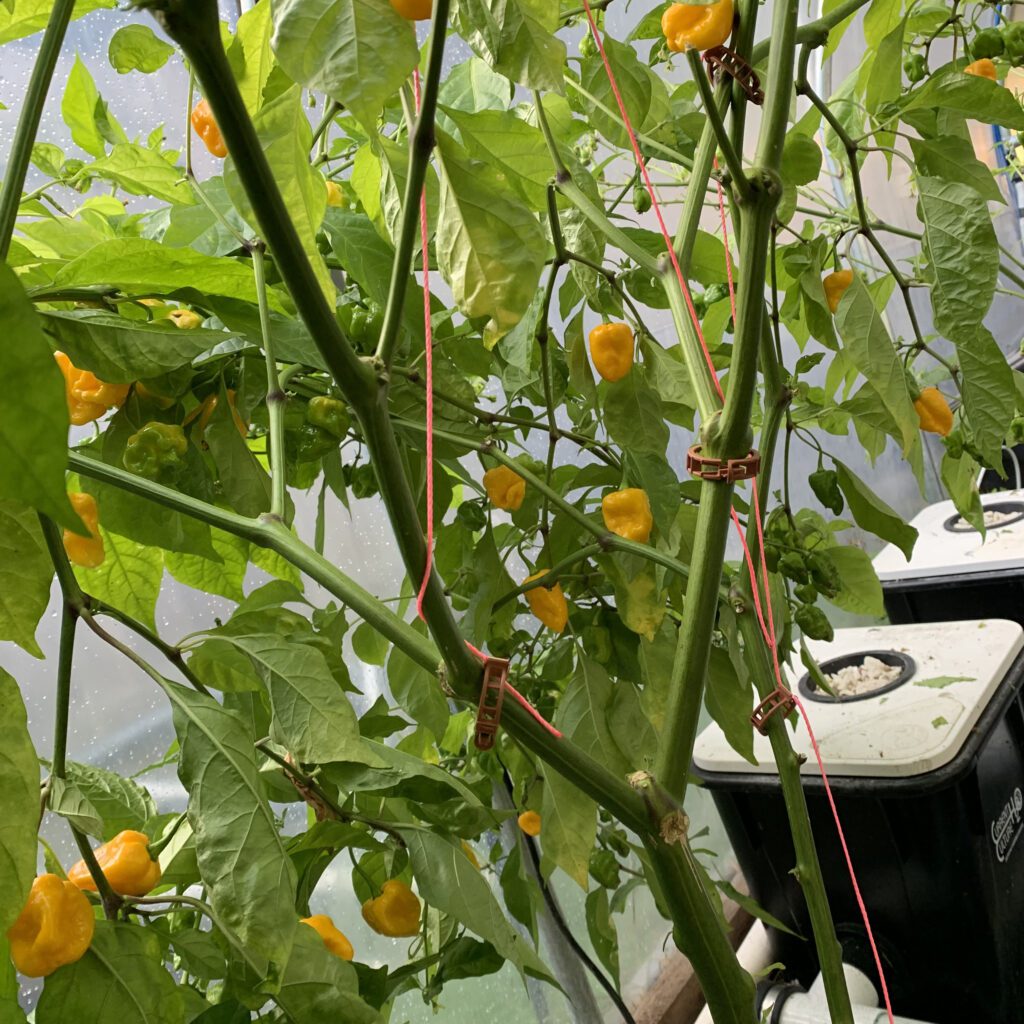
Here’s a quick real world example: in conventional soil gardens, even in very favorable growing climates, super hot chilies like Carolina Reapers typically only get to a few feet tall. In highly aerated RDWC or DWC hydroponic systems the same plant genetics can reach nine feet tall and around, in the same growing environment and time frame.
Sounds a little hard to believe? Follow our journey from this growing season of 2021 in our hydroponic greenhouse, one of the hottest on record in our part of the world (Canadian Pacific Northwest).
We’ll discuss from seed to sauce how we yielded over 16 pounds of primo hydroponic grown hot peppers from a modest lineal area of only five feet by ten feet with only six (6) plants. This being our first attempt with growing hydroponic hot peppers, we think we could do about +40% better next season.
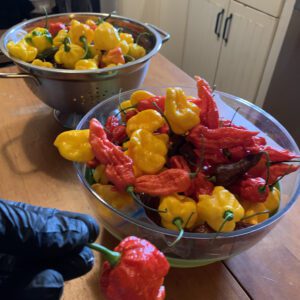
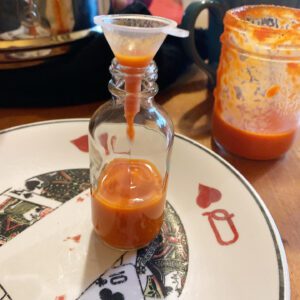
All in all, growing hydroponic hot peppers proved to be a really fun experience. Besides our goal of satisfying even the most ravenous ChiliHead for how-to hot pepper cultivation information, we’ll share some numbers and results from trial marketing efforts–it seems these homegrown hydroponic devils are in high demand, with plenty of people willing to pay shipping and handling for quality packs of fiery peppers delivered to their door. Just how much? Boutique inferno peppers can fetch up to $25 USD for 4 ounces, plus shipping.
Getting Started, Hot Pepper Seed Sourcing Tips
We love heirloom seed genetics. However, if you want the hottest peppers possible the closer your seed genetics come from the original seed source the better. Bhut Jolokia (ghost peppers) are from India and Trinidadian Moruga Scorpion peppers are from…well you know. The Carolina Reaper, one of our personal favorites here, was reportedly developed in the good ole US of A by a breeder named Ed Currie by crossing the Indian Bhut Jolokia with a Habanero variety.
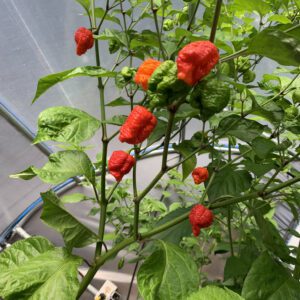
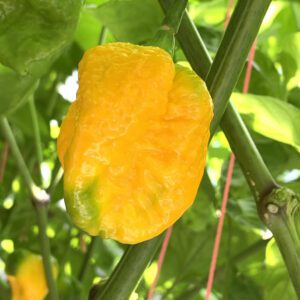
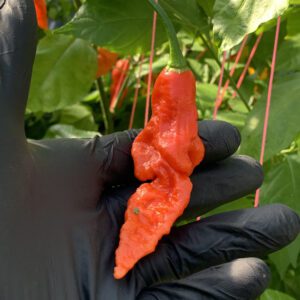
The more generations between your seed source from the originals, the more “drift” you are likely to encounter which may include less fire (Scoville Heat Units) when growing hydroponic hot peppers. However, crossing the original varieties to proven local cultivars may give them more hardiness and resistance to challenges based on local weather, crop pests, disease pressures, etc. In our limited experience we have to say that the original varieties like Bhut Jolokia, Trinidadian Scorpion, etc may be finicky to germinate, however, once established are very hardy and don’t seem to attract problems; especially in the greenhouse.
If you’re super serious about growing that capscicum fire, ask your seed supplier the origin of their seed source–are they reproduced in North America or do they source directly from the country of origin? Be prepared to pay a premium on high quality hot pepper genetics where a single seed can go for a dollar or even more.
Germinating Hydroponic Hot Pepper Seeds
While there may be other ways to propagate or start crops of hydroponic hot peppers, we always like starting from high quality seed. Most growers don’t recommend propagating capsicum buy taking cuttings. In some areas with a mild climate or with the help of a greenhouse, growers may overwinter their favorite hot pepper plants and rejuvenate again for the following year. When growing with water culture, overwintering probably isn’t a good way to go.
Compared to other hydroponic crop types we grow like Basil, Spinach and Tomatoes we find germinating hot pepper seeds to be a little more finicky. More accurately, it’s more so the germination rates themselves. The seeds that do emerge within two weeks from planting are quite vigorous and hardy.
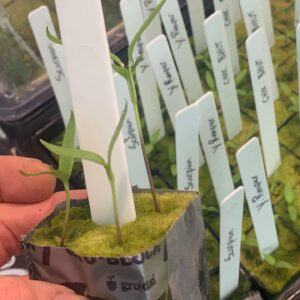
In our experience (and other North American growers we spoke to) Trinidadian Scorpion, while being the hottest of the lot, had a very low germination rate (less than 35%).
Red Bhut Jolokia had better germination rates, at least over 50% and is the second hottest of the varieties we grew.
Chocolate Bhut Jolokia had fair germination rates, slightly better than it’s Red cousin although the finished fruit packs slightly less heat.
Our Yellow Carolina Reaper seeds had great germination rates, near 100%. While extremely hot, even compared to other hot pepper varieties, this one is the least hot we grew (although the most flavorful).
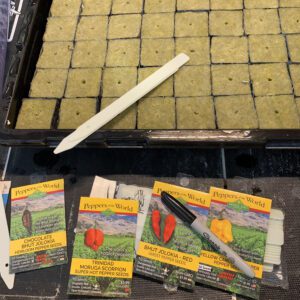
Why Lower Germination Rates?
Our hypothesis is the seed stock is older as it comes from further away and at greater expense. Having or requesting lot numbers from potential hot pepper seed suppliers may be a good way to validate seed viability moving forward.
Interestingly, the seeds themselves gave off a noticeable hot pepper sensation–best to handle with good ventilation and gloves are a must!
Hot Pepper Germination Method
Start seeds as early as possible–a greenhouse or a small grow tent is a good way to get an early jump on the season. At Northern Latitudes starting as early as February is recommended. Hot peppers love warmth and can require several months of healthy development before they load up with fruit. Ideally, you’ll start harvesting while it’s still hot or warm out, ie July or August as opposed to September or October.
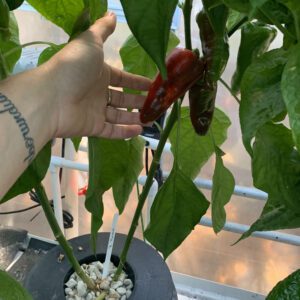
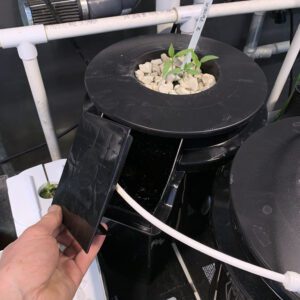
We germinated our seeds in rockwool. These seeds, once young seedlings, were transplanted into a variety of growing media for growing out in a variety of methods including coco coir, rockwool and water culture methods. Only a very small amount of rockwool is needed to get some seedlings going. Oasis is another suitable propagation medium and may even offer some advantages.
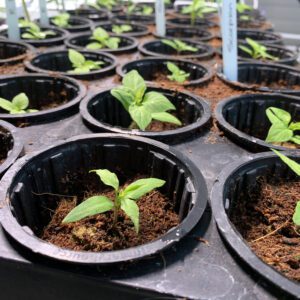
We like rockwool and Oasis for starting seeds because the media is guaranteed to be sterile, free of pathogens, pests and is very consistent from batch to batch. The fact that the growing media holds good air space even when completely saturated helps improve germination, early growth and lessens the likelihood of encounter propagation diseases like fusarium or pythium (from water logged substrates)
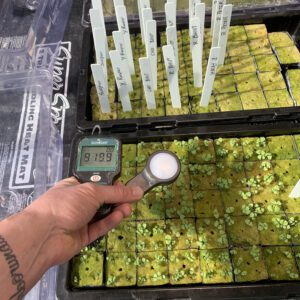
For starting seeds in rockwool you’ll need to precondition the growing medium first. You’ll need filtered water, pH down, and a pH test kit or meter.
- Fill a clean plastic pail or jug with filtered water, room temperature.
- Adjust pH to 5.0 to 5.5 using pH down
- With clean hands, dip rockwool propagation cubes into the pH buffered filtered water one at a time for about ten seconds
- GENTLY shake away excess water and place into a clean propagation tray
- Be mindful not to compress rockwool when handling–keeping the pore space in the structure is important.
Bottom heating seedling or cell trays with propagation heat mats helps improve results and saves you from trying to heat larger volumes of air when it’s really just a few starters you want to keep at a steady 75 to 80 degree Fahrenheit.
Propagation domes with vents are optional, but do a good job of helping maintain warmth and high humidity levels for optimal germination. For larger scale propagation efforts, domes are typically not used as the propagation area has ample humidification equipment (80 to 90% humidity).
With gloved hands, use a clean metal screw or nail to poke a ¼” deep hole into the propagation medium–gently push a seed into the hole and close the opening over top of the seed with the wide end of the nail or screw. Label all of your seedlings with plastic tags and permanent markers–otherwise it could be many months before you can determine which variety is which!
Typically, you should see hot pepper seedlings emerging in 10 to 14 days after planting when optimal conditions are being met.
TIP: don’t overwater seedlings! Rockwool should hold ample moisture in humidity domes until seedlings emerge, in other environments gauge seedling irrigation cycles carefully–using a mister system or fog nozzle on a wand is preferred for keeping germination medium moist, not saturated.
Supplemental Lighting for Hydroponic Pepper Seedlings
Usually, seeds don’t need light until they first poke through the germination medium. However, if germinating indoors or in a greenhouse supplemental lighting sources often help to stimulate stronger starts and add some extra warmth to the growing environment. However, you don’t need much. 150 uMol-s (micro moles) is plenty. We used an LED grow light over a square meter in the greenhouse over top of our bottom heated growing tray. A timer was set for 16 hours of light per 24 hour cycle. Full spectrum fluorescent lighting is also suitable for just a couple trays. LED grow lights can cover more area while using less power with greater intensity.
